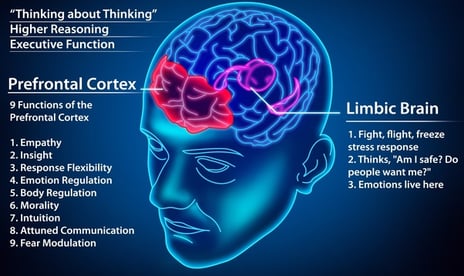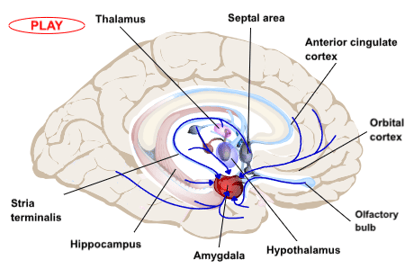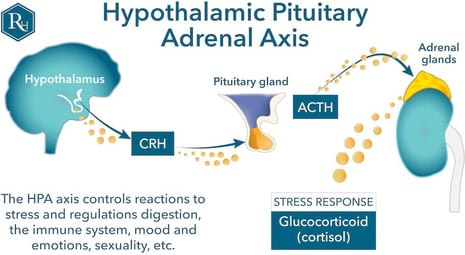Managing Anxiety and Burnout: Understanding the Brain-Body Connection
Understanding Anxiety and Burnout According to the WHO
Anxiety: Definition and Characteristics
According to the World Health Organization (WHO), anxiety is a common mental health condition characterized by feelings of tension, worried thoughts, and physical changes such as increased heart rate or blood pressure. It is a normal human experience that can become problematic when it occurs frequently or inappropriately, leading to significant distress or impairment in daily functioning. Anxiety can manifest in various forms, including generalized anxiety disorder, panic disorder, and specific phobias, each presenting unique symptoms but all rooted in excessive worry and fear about future events.
Anxiety serves an important survival function by triggering the body's fight-or-flight response during threatening situations. However, when anxiety becomes chronic or disproportionate to the actual threat, it can lead to avoidance behaviors and interfere with daily life.
Burnout: Definition and Characteristics
The WHO recognizes burnout as an "occupational phenomenon" rather than a medical condition. It is defined as a syndrome resulting from chronic workplace stress that has not been effectively managed. The key characteristics of burnout include:
Feelings of energy depletion or exhaustion
Increased mental distance from one's job, often accompanied by feelings of cynicism (associated with depression and can serve as a coping mechanism for individuals who feel powerless or frustrated by societal issues.)
Reduced professional efficacy
Burnout specifically pertains to work-related contexts and should not be generalized to other life areas. It reflects a state of emotional, physical, and mental exhaustion caused by prolonged stressors at work, leading to diminished motivation and productivity
Why Anxiety and Burnout Are the Epidemics of Modern Life?
In today’s fast-paced world, anxiety and burnout are no longer just buzzwords—they're realities that affect millions of people daily. you’re not alone if you’ve felt overwhelmed by constant stress or struggled to muster the energy to get through the day, you’re not alone.
According to the American Psychological Association (APA), 77% of people in the U.S. report experiencing physical symptoms of stress, with anxiety and burnout being the leading culprits. But here’s the thing: these aren’t just psychological phenomena—they’re deeply rooted in the way your brain and nervous system function.
Understanding the science behind anxiety and burnout can help you take control and implement strategies to heal, rebuild, and thrive.


What Happens in the Brain During Anxiety and Burnout?
Anxiety and burnout are both closely tied to the stress response system in the brain, particularly the limbic system. Let’s break it down into the three key players:
1. The Amygdala: The Brain’s Alarm System
The amygdala is responsible for detecting threats and triggering the “fight, flight, or freeze” response. In individuals with chronic anxiety, the amygdala is hyperactive, constantly sending danger signals—even in situations that aren’t threatening.
2. The Prefrontal Cortex: The Brain’s Decision-Maker
The prefrontal cortex helps regulate emotional responses and make logical decisions. However, prolonged stress and burnout impair this region, making it harder to think clearly, focus, or manage emotions.
3. The HPA Axis: Stress Hormone Central
The hypothalamic-pituitary-adrenal (HPA) axis regulates the release of cortisol, your body’s main stress hormone. Chronic stress causes the HPA axis to overproduce cortisol, leading to anxiety, fatigue, and even physical symptoms like headaches and digestive issues.
How Burnout and Anxiety Are Interconnected
Burnout is often described as the culmination of prolonged stress—it’s the body and brain's way of saying, “I’ve had enough.” Anxiety often precedes burnout, as the brain remains stuck in a heightened state of stress.
Signs of Anxiety:
Excessive worry
Racing thoughts
Physical symptoms (rapid heartbeat, sweating)
Difficulty concentrating
Signs of Burnout:
Emotional exhaustion
Detachment or cynicism
Reduced productivity
Feeling numb or unmotivated
While anxiety is characterized by overactivation of the stress response, burnout is the brain’s way of shutting down to conserve energy—a phenomenon linked to the prefrontal cortex “going offline.






Image source:nba.uth.tmc.edu/neuroscience/
Image source: rhealth.com
Image source: yoga anatomy.com
How to Manage Anxiety and Burnout: Science-Backed Strategies
The good news is that anxiety and burnout are not permanent states. By understanding the brain-body connection, you can use evidence-based strategies to recover and thrive.
1. Practice Mindfulness to Calm the Amygdala
Mindfulness meditation has been shown to reduce amygdala activity and improve emotional regulation. According to a 2021 study published in Nature Reviews Neuroscience, just 10 minutes of mindfulness practice daily can significantly lower anxiety levels.
How to Start:
Use apps like Headspace or Calm to guide your practice.
Focus on your breath, observing each inhale and exhale.
If your mind wanders, gently bring your attention back to the present.
2. Reset Your HPA Axis with Regular Sleep
The HPA axis needs downtime to recalibrate, and sleep is one of the most effective ways to achieve this. Sleep deprivation exacerbates anxiety and reduces your ability to cope with stress.
Sleep Tips:
Create a bedtime routine: dim lights, no screens 1 hour before bed.
Use products like weighted blankets to promote relaxation.
Consider sleep aids like blue-light-blocking glasses or melatonin gummies.
3. Rewire Your Brain with Gratitude
Gratitude practices activate the brain’s reward system, reducing the focus on stress and anxiety. Research from the Journal of Positive Psychology shows that writing down three things you’re grateful for every day can significantly reduce cortisol levels over time.
How to Practice:
Keep a gratitude journal and write in it before bed.
Use apps like Grateful or Five Minute Journal.
4. Incorporate Physical Activity
Exercise promotes the release of endorphins and reduces the amygdala’s overactivation. Aerobic exercises like running, swimming, and dancing are particularly effective.
What Works Best:
Try at-home workouts with platforms like Peloton or Aaptiv.
Add tools like resistance bands or yoga mats for variety.
5. Support Brain Health with Nutrition
What you eat directly impacts your brain’s ability to handle stress. Foods rich in omega-3s, magnesium, and antioxidants support neurotransmitter function and reduce inflammation in the brain.
Key Foods:
Fatty fish (salmon, mackerel), contain omega-3 fatty acid(Omega-3s have been linked to improved mood and may help alleviate symptoms of depression and anxiety. Some studies indicate that they can be beneficial for individuals who do not respond well to traditional antidepressants, and have shown potential in managing symptoms of autoimmune diseases like lupus and Crohn's disease)
Leafy greens (spinach, kale)
Nuts and seeds (chia seeds, walnuts)
6. Strengthen Your Vagus Nerve
The vagus nerve connects the brain and body, plays a key role in the parasympathetic (rest and digest) response. Activating the vagus nerve helps calm anxiety and regulate the stress response.
Techniques:
Practice deep breathing (e.g., inhale for 4 seconds, exhale for 6).
Try cold exposure therapy (cold showers or ice baths).
Use vagus nerve stimulators like TENS units .




